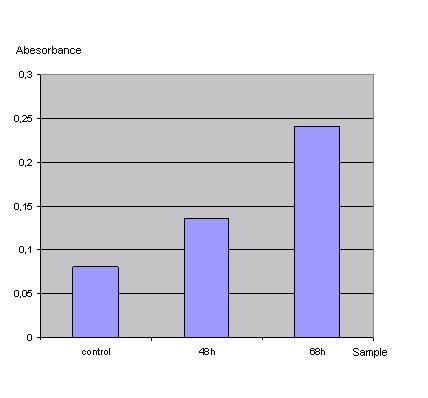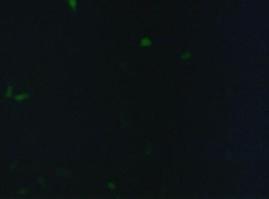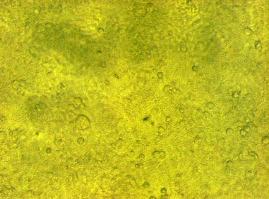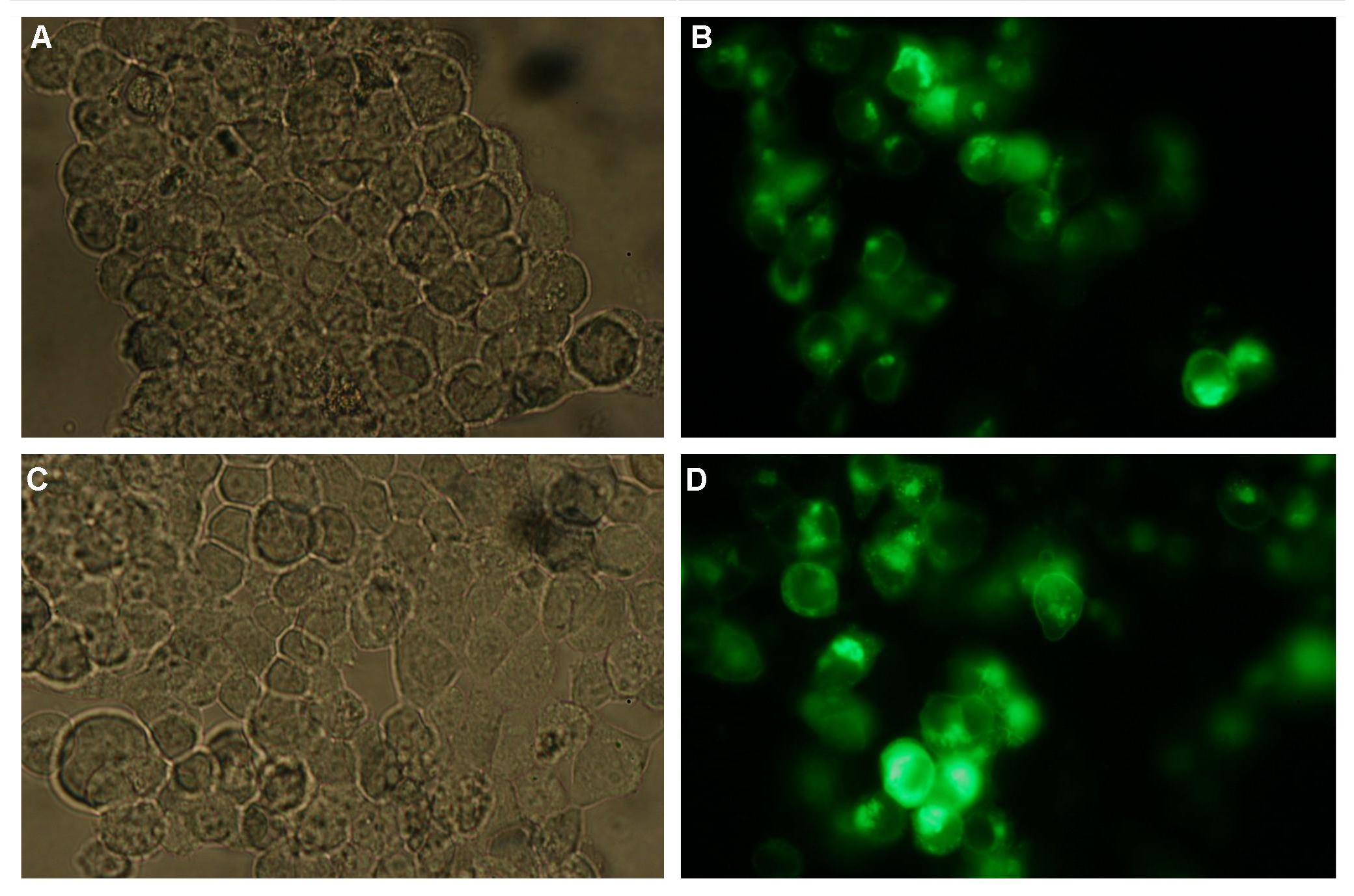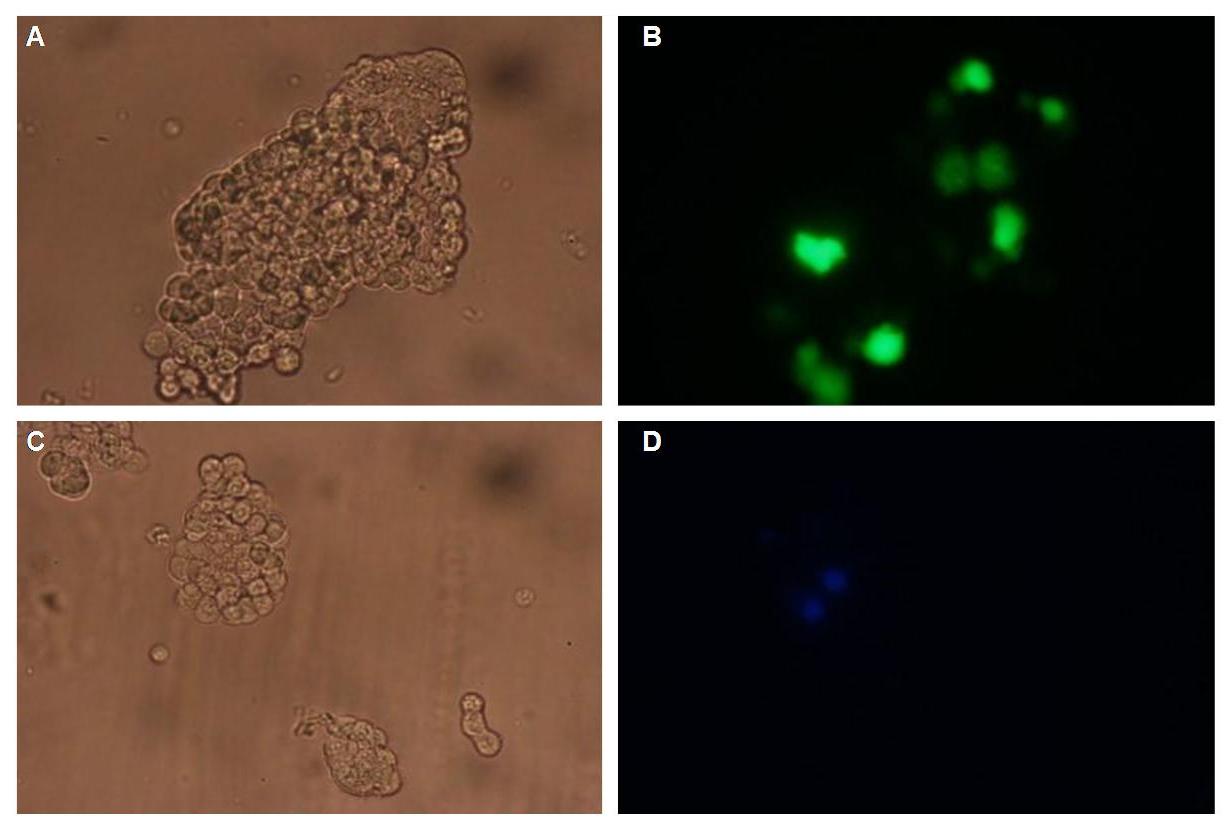Team:Freiburg Transfection
From 2008.igem.org
(Difference between revisions)
| Line 27: | Line 27: | ||
<br> | <br> | ||
'''Figure 2_Transfection: Structure of the signalpeptide-Lipocalin-transmembraneregion-betaLactamase1-YFP construct. | '''Figure 2_Transfection: Structure of the signalpeptide-Lipocalin-transmembraneregion-betaLactamase1-YFP construct. | ||
| - | Extracellular: Lipocalin, GGGSlinker; Transmembrane: transmembraneregion of the EGF-receptor; Intracellular: Split-beta-Lactamase1, YFP'''<br> | + | Extracellular: Lipocalin, GGGSlinker; Transmembrane: transmembraneregion of the EGF-receptor; Intracellular: Split-beta-Lactamase1, YFP.'''<br> |
<br> | <br> | ||
Membranelocalization of the construct signalpeptide-Lipocalin-transmembraneregion-betaLactamase1-YFP is visible in transfected 293T cells (Figure 3_Transfection). The fluorescence of the cells is most likely restricted to the cellmembrane which confirms the assembly of the construct in the cytoplasmamembrane.<br> | Membranelocalization of the construct signalpeptide-Lipocalin-transmembraneregion-betaLactamase1-YFP is visible in transfected 293T cells (Figure 3_Transfection). The fluorescence of the cells is most likely restricted to the cellmembrane which confirms the assembly of the construct in the cytoplasmamembrane.<br> | ||
| - | In comparison, 293T cells transfected with the construct transfectionvector-YFP show a uniformly distributed fluorescence all-over the cell (Figure | + | In comparison, 293T cells transfected with the construct transfectionvector-CMV-YFP show a uniformly distributed fluorescence all-over the cell (Figure 4_Transfection A and B).<br> |
| - | Transfection with the construct transfectionvector-CFP as well results in completely fluorescent cells (Figure 4_Transfection C and D).<br> | + | Transfection with the construct transfectionvector-CMV-CFP as well results in completely fluorescent cells (Figure 4_Transfection C and D).<br> |
<br> | <br> | ||
[[Image:Freiburg2008_SP_LIPO_GGGS_TM_bla1_YFP_1.jpg|710px]]<br> | [[Image:Freiburg2008_SP_LIPO_GGGS_TM_bla1_YFP_1.jpg|710px]]<br> | ||
| - | '''Figure 3_Transfection'''<br> | + | '''Figure 3_Transfection: 293T cells transfected with signalpeptide-Lipocalin-transmembraneregion-betaLactamase1-YFP.'''<br> |
<br> | <br> | ||
[[Image:Freiburg2008_TV_CMV_YFP___CFP_loeslich.jpg|700px]]<br> | [[Image:Freiburg2008_TV_CMV_YFP___CFP_loeslich.jpg|700px]]<br> | ||
| - | '''Figure 4_Transfection'''<br> | + | '''Figure 4_Transfection: 293T cells transfected with transfectionvector-CMV-YFP (A and B); 293T cells transfected with transfectionvector-CMV-CFP (C and D)'''<br> |
<br> | <br> | ||
<h3>'''Double transfections with Splitfluorophor-/Splitenzyme-constructs'''</h3> | <h3>'''Double transfections with Splitfluorophor-/Splitenzyme-constructs'''</h3> | ||
| - | On Figure 5_Transfection the structures of the signalpeptide-Lipocalin-transmembraneregion-nCFP and signalpeptide-Lipocalin-transmembraneregion-fluolinker-cCFP are visible (exemplary for the Splitfluorophore-/Splitenzyme-constructs). The extracellular fragment is build of Lipocalin (fluorescein binding Anticalin) and a GGGSLinker. Intracellular either the N-terminal part or the C-terminal part of the splitfluorophore is fused to the transmembrane region of the EGF-receptor. To achieve more flexibility and to support the assembly of the two splitfluorophore parts a fluolinker is fused in between the transmembrane region and the C-terminal part of the splitfluorophores.<br> | + | On Figure 5_Transfection the structures of the signalpeptide-Lipocalin-transmembraneregion-nCFP and signalpeptide-Lipocalin-transmembraneregion-fluolinker-cCFP constructs are visible (exemplary for the Splitfluorophore-/Splitenzyme-constructs). The extracellular fragment is build of Lipocalin (fluorescein binding Anticalin) and a GGGSLinker. Intracellular either the N-terminal part or the C-terminal part of the splitfluorophore is fused to the transmembrane region of the EGF-receptor. To achieve more flexibility and to support the assembly of the two splitfluorophore parts a fluolinker is fused in between the transmembrane region and the C-terminal part of the splitfluorophores.<br> |
<br> | <br> | ||
[[Image:Freiburg2008_Lipo+Split_CFP.jpg|450px]]<br> | [[Image:Freiburg2008_Lipo+Split_CFP.jpg|450px]]<br> | ||
| - | '''Figure 5_Transfection'''<br> | + | '''Figure 5_Transfection: structure of the signalpeptide-Lipocalin-transmembraneregion-nCFP and signalpeptide-Lipocalin-transmembraneregion-fluolinker-cCFP constructs'''<br> |
<br> | <br> | ||
Adding fluorescein-coupled molecules leads to a clustering of the Lipocalin constructs due to the fluorescein-Lipocalin-binding (Similarly Nip-coupled molecules, for instance Nip-coupled DNA origamis, lead to a clustering of Nip constructs). | Adding fluorescein-coupled molecules leads to a clustering of the Lipocalin constructs due to the fluorescein-Lipocalin-binding (Similarly Nip-coupled molecules, for instance Nip-coupled DNA origamis, lead to a clustering of Nip constructs). | ||
| Line 49: | Line 49: | ||
<br> | <br> | ||
[[Image:Freiburg2008_Lipo+Split_YFP.jpg|450px]]<br> | [[Image:Freiburg2008_Lipo+Split_YFP.jpg|450px]]<br> | ||
| - | '''Figure 6_Transfection'''<br> | + | '''Figure 6_Transfection: clustering and assembly of the signalpeptide-Lipocalin-transmembraneregion-nCFP and signalpeptide-Lipocalin-transmembraneregion-fluolinker-cCFP constructs'''<br> |
<br> | <br> | ||
<br> | <br> | ||
Revision as of 18:08, 28 October 2008
 "
"


